The Chapter House Westminster Abbey, and the Pyx Chamber
8 min read“As the rose is the flower of flowers, so this is the house of houses.” — this famous quote welcomes you into the Chapter House of Westminster Abbey, a structure...
The post The Chapter House Westminster Abbey, and the Pyx Chamber appeared first on Timeless Travel Steps.
“As the rose is the flower of flowers, so this is the house of houses.” — this famous quote welcomes you into the Chapter House of Westminster Abbey, a structure often described as a chapter house beyond compare and encapsulates the essence of the extraordinarily well-preserved medieval structure.
Set within the iconic walls of Westminster Abbey which is one of the most beautiful churches in London, the Chapter House is well worth a visit. This medieval architecture tells a story of grandeur and historical significance that spans centuries. Built in the 13th century as a meeting place for the Benedictine monks who oversaw the administration of the Abbey, the Chapter House is a masterpiece of Gothic design, adorned with 14th century wall paintings.
Adjacent to the Chapter House is another significant room, the Pyx Chamber, which predates the Chapter House to the 11th century, with original features still intact. The Pyx Chamber was used as a treasury for both the Abbey and the Crown. Both of these iconic rooms are set along the cloisters of Westminster Abbey, where monks used to relax, meditate, or exercise.
In this post, I will share what I discovered from my recent visit to, with plenty of photos taken by me, including the rich history and stunning architecture of the Chapter House, Pyx Chamber, as well as the cloisters at Westminster Abbey. Managed by English Heritage, these areas are accessible independently of the main Abbey, either through your English Heritage membership or by paying a separate fee. Alternatively, you can access these areas with a Westminster Abbey ticket.
Timeless Travel Steps is supported by our readers. If you purchase through an affiliate link on my site, at no cost to you, I may earn a commission from qualifying purchases. Please read our Disclosure for further information.
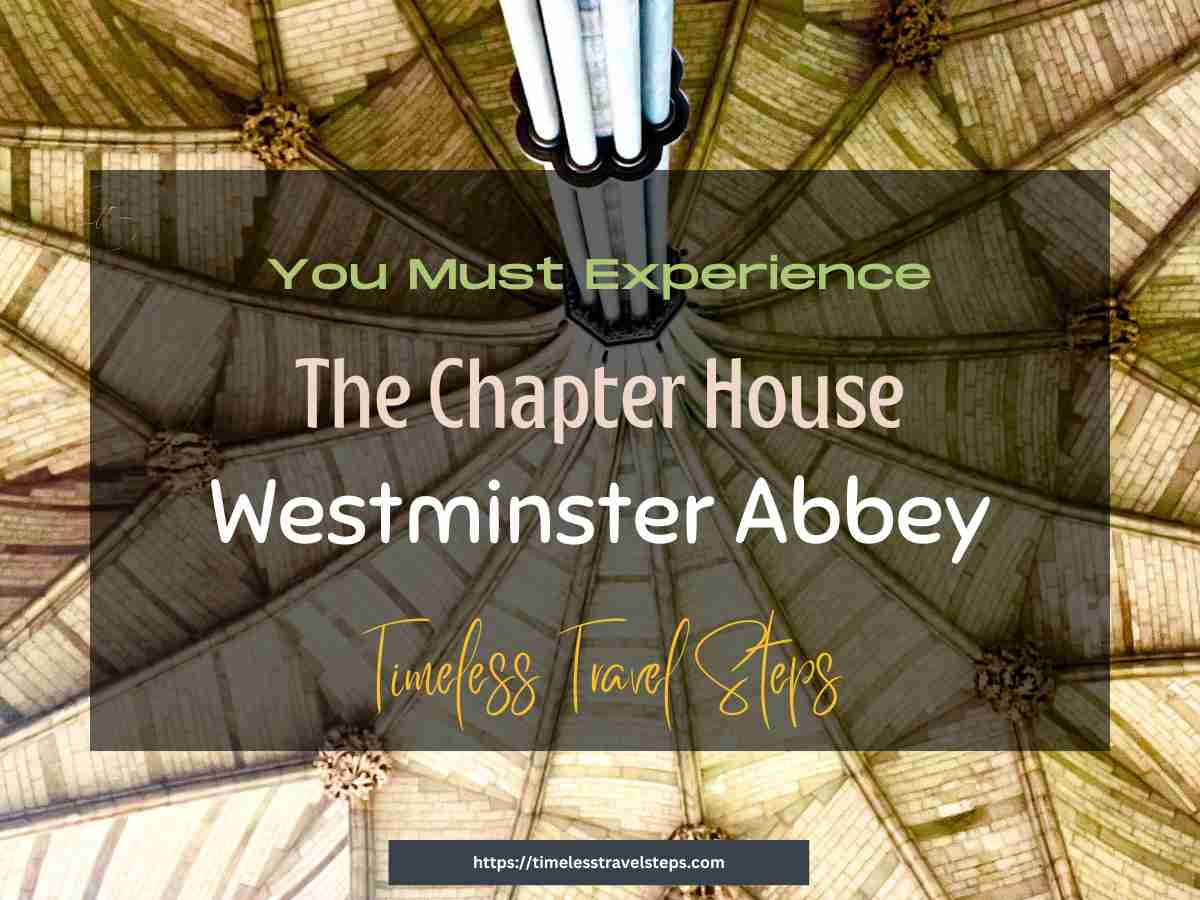
The Oldest Door in Britain, before The Chapter House Westminster Abbey
Located under the arches leading to the Chapter House, on the right-hand side of the passage, is a remarkable late Saxon door, considered to be the oldest door in England.
The door is said to have been crafted around AD 1050 from oak trees that once grew in the forests surrounding London. This ancient door features iron hinges that conceal traces of cowhide, suggesting that it was originally covered with painted hide on both sides.
While there was a belief that the hide came from two monks flayed for their involvement in the 1303 Pyx Chamber robbery, it is now understood that the hide was used purely for decorative purposes.
Originally much taller, possibly reaching nine feet high, the door was later reduced in size. Its survival is particularly notable because when Henry III rebuilt Westminster Abbey, he removed most traces of the original Saxon structure. It is believed that the door was spared due to its significance, with one theory suggesting it once enclosed the chamber where Edward the Confessor’s body lay.
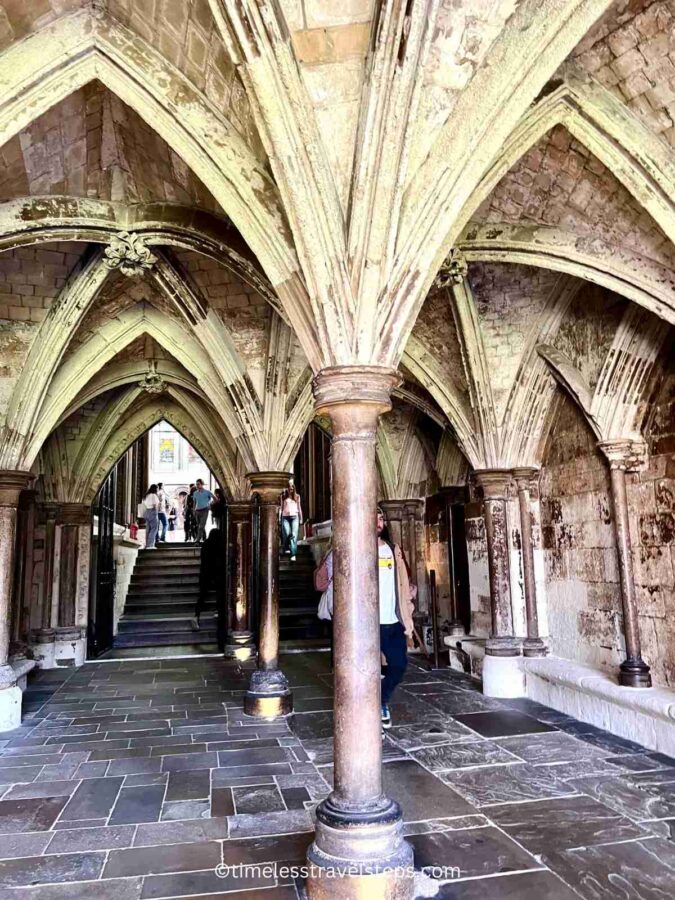
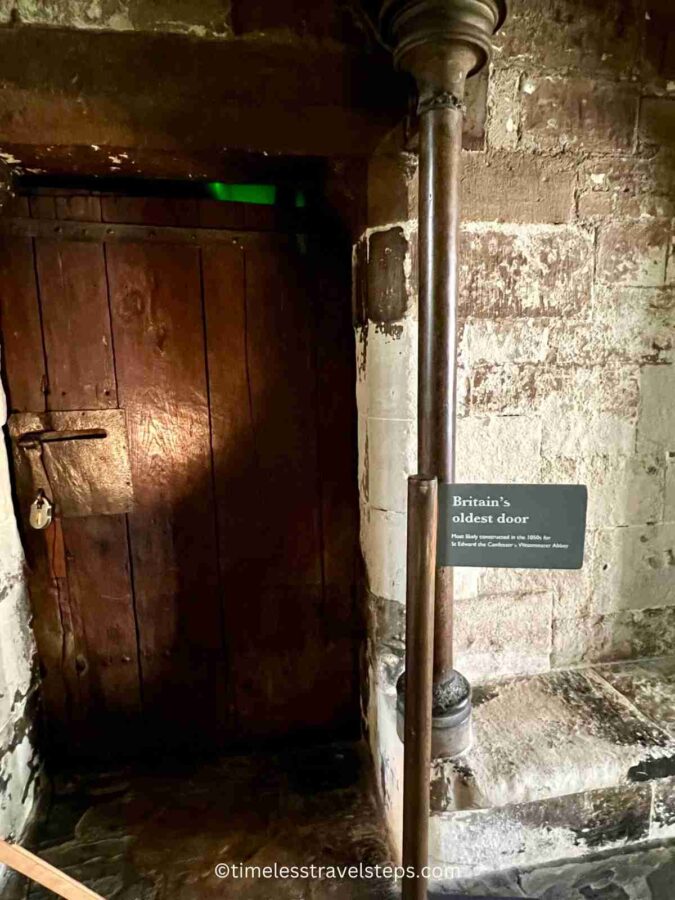
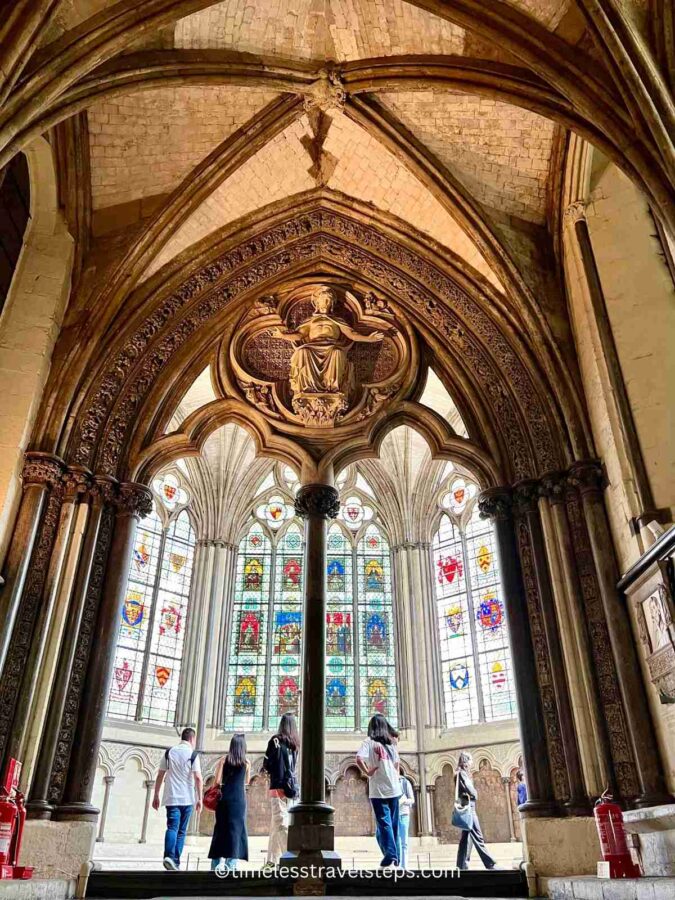
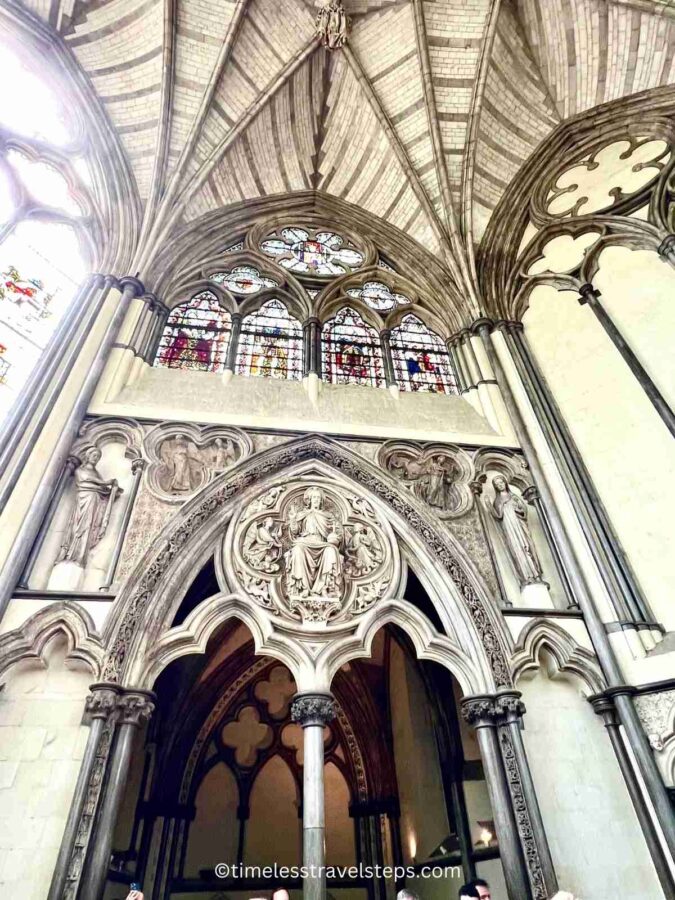
The Chapter House, Westminster Abbey, London
The Chapter House, Westminster Abbey is a place where history and heritage blend seamlessly into the fabric of London’s past and present. Established in 1250, the Chapter House has stood as a testament to the architectural ingenuity and artistic excellence of medieval England. Imagine monks gathering in this sacred space, discussing the matters of the Abbey, their voices echoing off its vaulted ceiling.
Over the centuries, these walls have witnessed pivotal moments in English history, serving as a meeting place for the Great Council of the Crown, the predecessors of the present day Parliament.
The Architecture of the Chapter House Westminster Abbey
The Chapter House is a beautiful example of Gothic architecture. Step inside, and you will be greeted by the intricate design that defines its unique style. Octagonal in shape, with stone benches around the walls, it boasts a lofty vaulted ceiling upheld by a central pillar. The vaulted ceiling soars above, a marvel of engineering and beauty, designed to inspire awe and reverence.
Surrounding the space above, you’ll notice eye-catching stained glass windows. These windows are relatively new, installed after the Second World War, incorporating as much of the original Victorian design as possible.
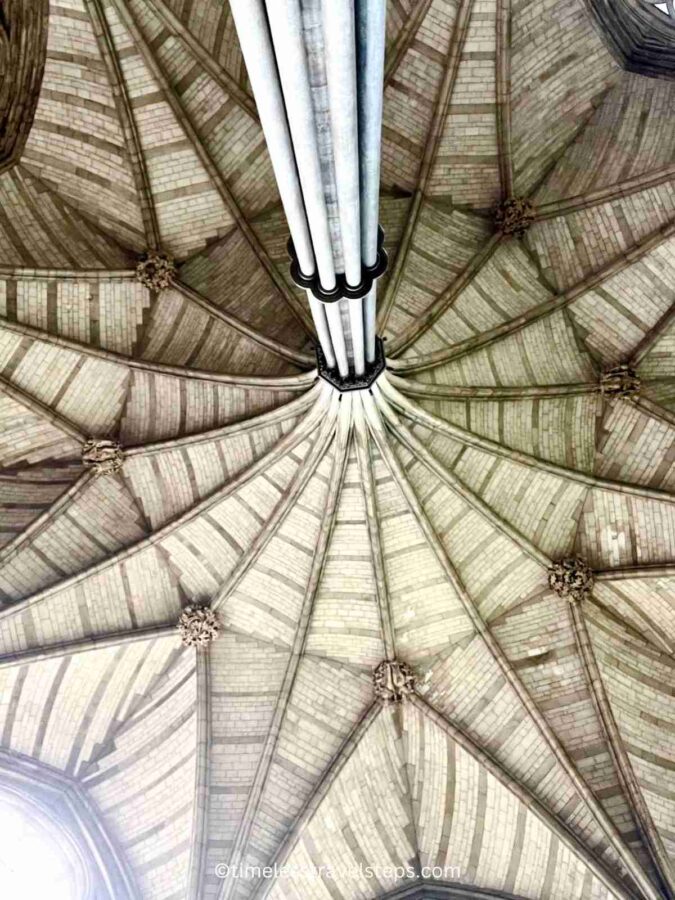
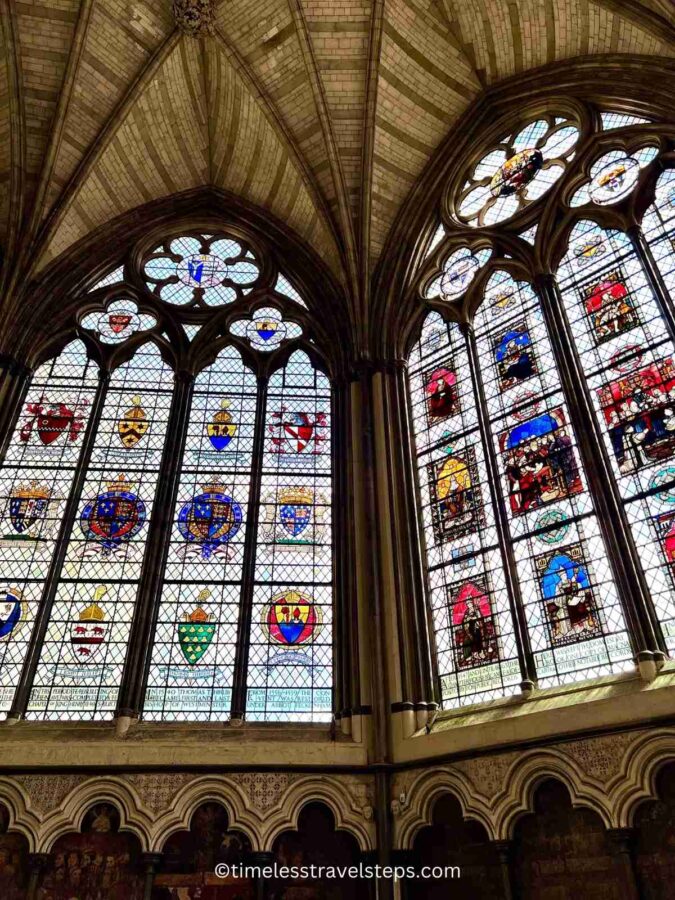
14th Century Murals in the Chapter House Westminster Abbey
The circular walls of the Chapter House feature exceptionally well-preserved murals from the 14th century, a donation from John of Northampton, a monk, are more than decorations. These artworks, a collection from 1375 to 1404, though faded in some parts of the wall, are absolutely rich and intriguing. The paintings illustrate stories of the Apocalypse and the Last Judgement and are considered some of the most important original work in England. These stories offer glimpses into the medieval mindset, and artistic traditions.
A century later, paintings of birds and animals were added below the main Biblical frieze. These scenes are systematically arranged under the arches that encircle the Chapter House, with each arch displaying four scenes bordered by red bands adorned with roses or small dogs. Beneath each scene, there are scrolls of text.
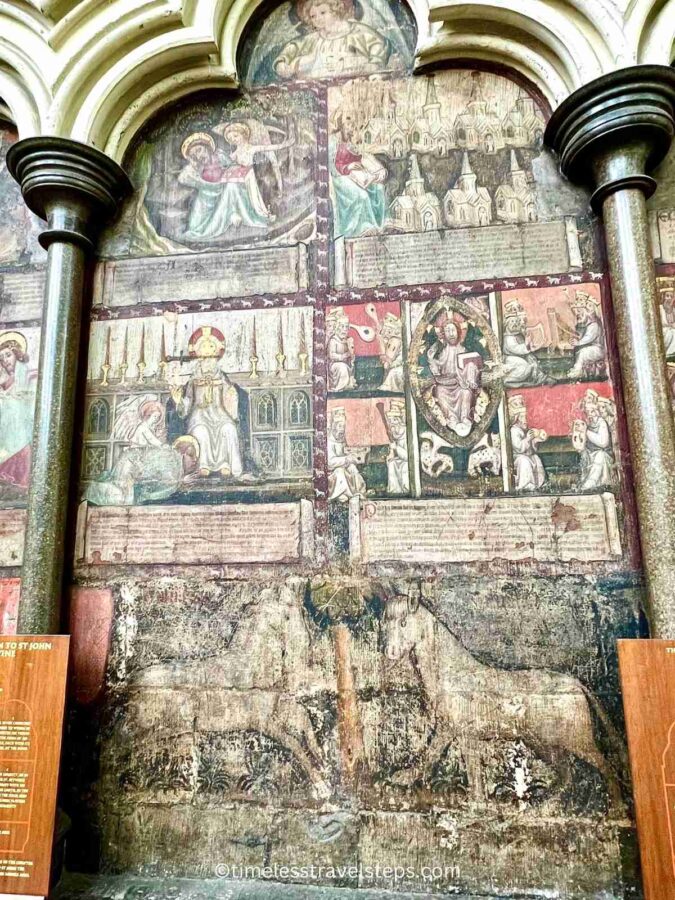
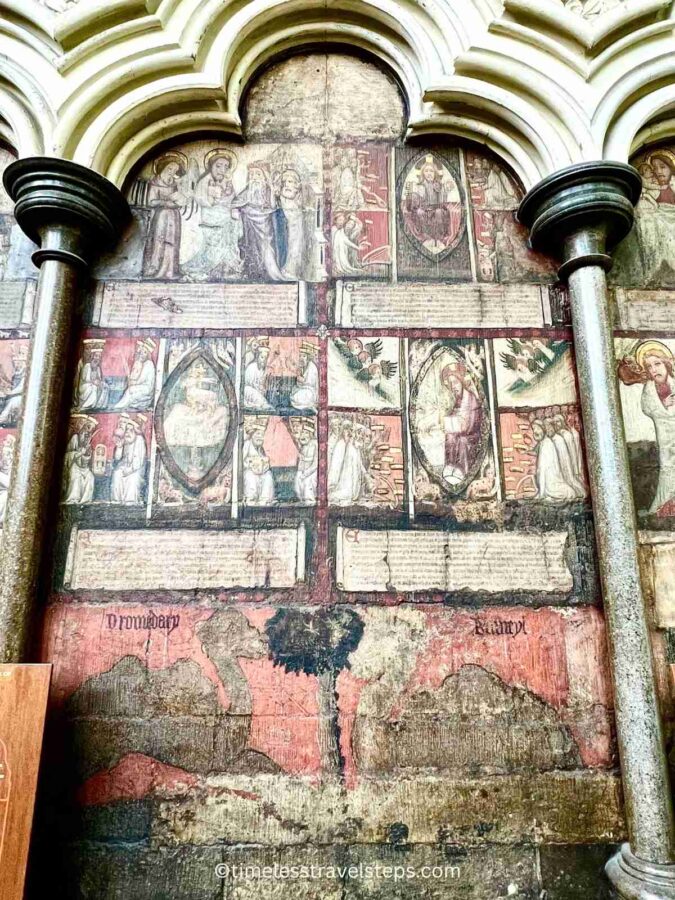
The Floor Tiles in the Chapter House
Beneath the central pillar that supports the soaring vaulted ceiling, you’ll notice the original floor tiles. Intricately designed, and somewhat faded in places, these floor tiles have remarkably withstood the test of time.
According to the Chapter’s history, the floor tiles in the Chapter House are among the most extensive and finest examples of medieval tile pavements remaining in England.
These patterned and glazed tiles were meticulously arranged in a series of ‘carpets’ running from the entrance to the far wall in a west-to-east direction. The intricate designs were created by stamping patterns into the clay and filling the impressions with a lighter-coloured clay. After this process, the tiles were glazed and fired, though much of the original glaze has worn away over time.
The tiles feature a variety of patterns, including the coat of arms of Henry III with the three lions of England, along with images of people, fish, animals, and geometric designs such as a rose window reminiscent of an actual window in the Abbey.
The pavement also includes the beginning of a Latin text that poetically describes the Chapter House: “As the rose is the flower of flowers, so this is the house of houses.”
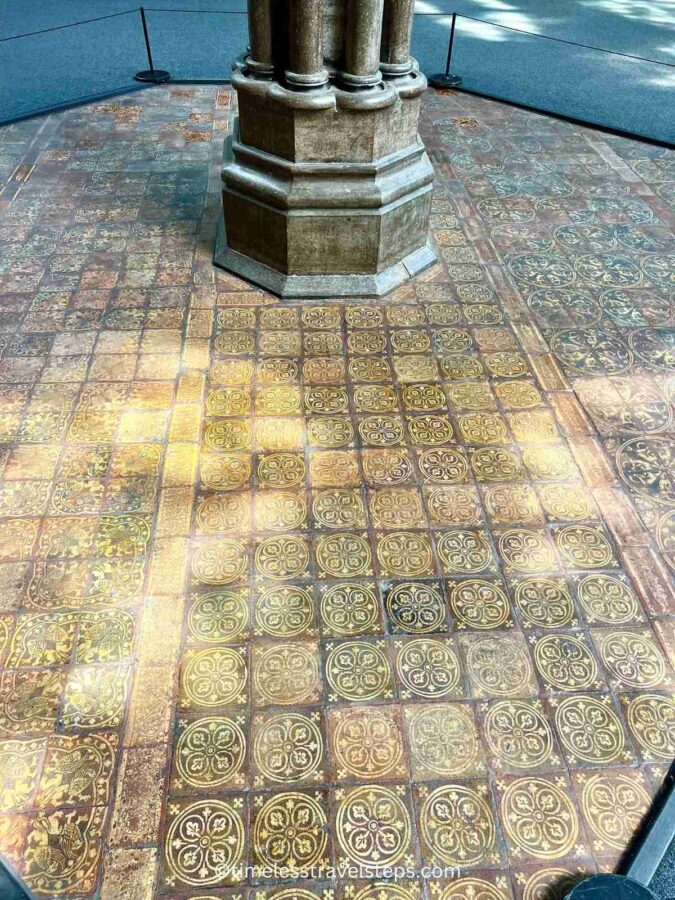
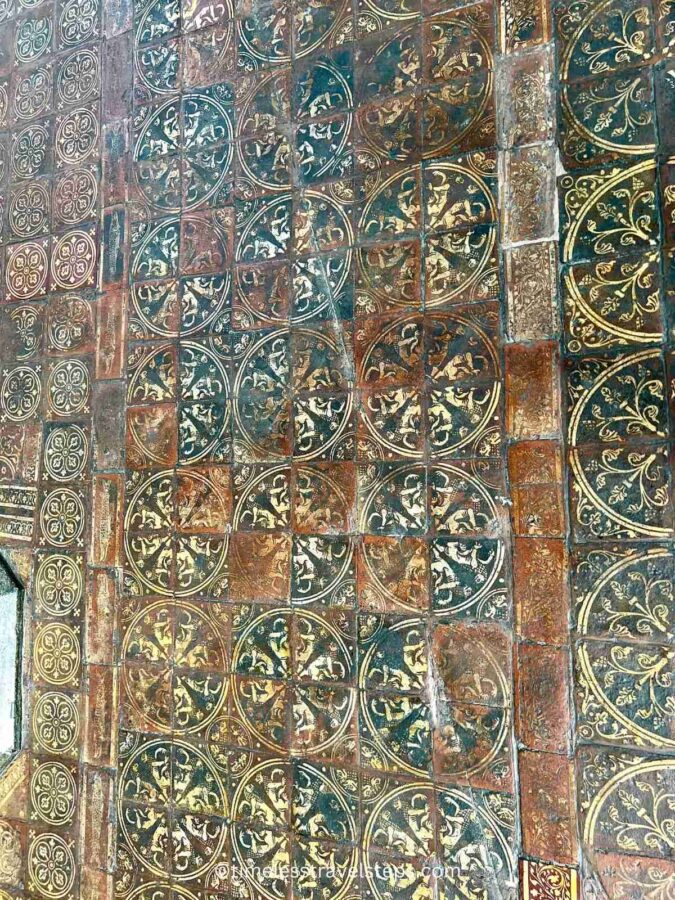
Pyx Chamber
Adjacent to the Chapter House, Westminster Abbey, you’ll find the Pyx Chamber. The Pyx Chamber predates the Chapter House, originating in the 11th century, and served as a treasury for both the monastery and the British crown.
Although many of its fittings were removed during the Reformation, a 13th-century stone altar and medieval floor tiles still remain. You can’t get an up-close view of these elements but you can observe them from the entrance.
Near the entrance, you’ll see a unique 15th-century cope chest, crafted around 1450. This wedge-shaped chest, one of only a few remaining in Britain, was designed to store circular capes or cloaks worn by clergy.
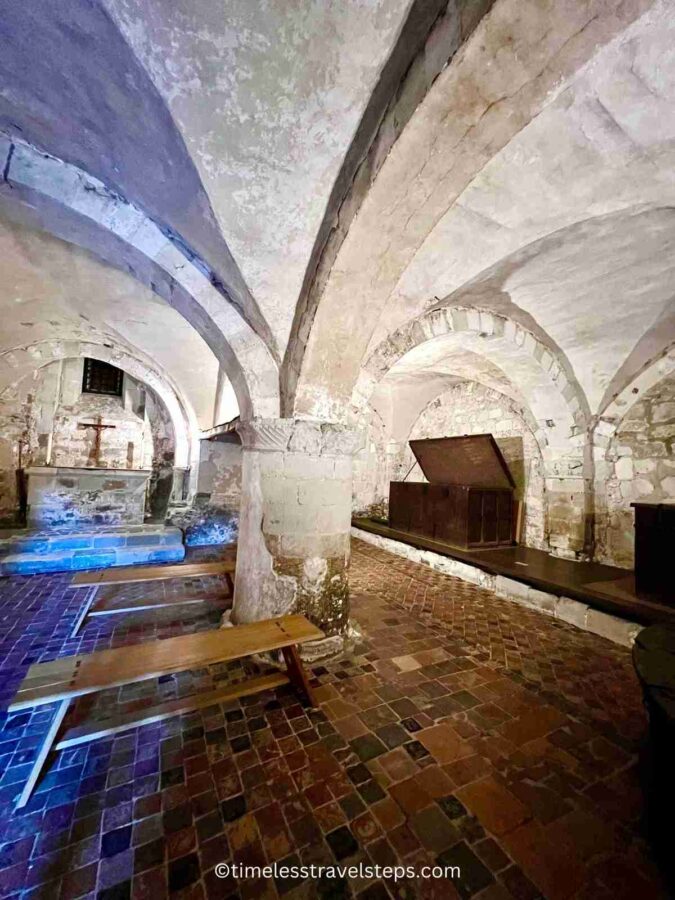
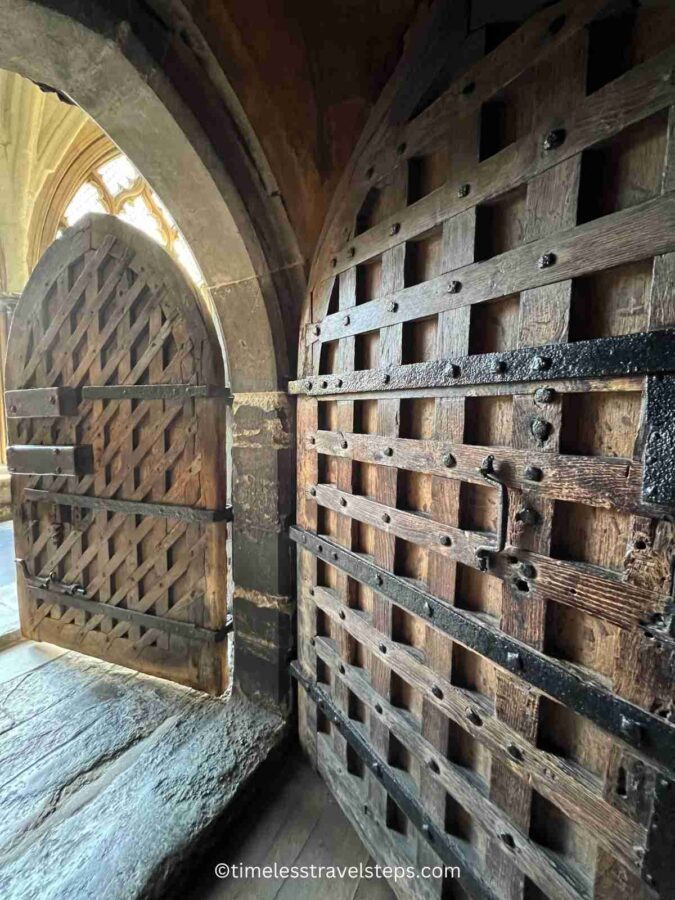
The Pyx Chamber Robbery
During the late 13th century, Edward I utilized the Pyx Chamber as a royal treasury, safeguarding valuables such as jewellery, precious objects, state swords, and silverware. It was considered one of the most secure storage places of the time, essentially a medieval high-security vault.
However, in 1303, the chamber was robbed, and suspicion fell on the monks of Westminster Abbey. The Abbot and 48 monks were arrested and questioned at the Tower of London. Apparently, Edward I was hesitant to impose harsh penalties on the Abbey, so he eventually ordered their release.
It was discovered that the true thief was Richard Pudlicote, an Oxfordshire gentleman. He was caught with some of the stolen goods, with more items found in pawnshops across the city. He was sentenced to death and transported from the Tower of London to Tothill Lane in a wheelbarrow, where he was hanged.
The story goes that Pudlicote’s skin was flayed and attached to the treasury door as a deterrent to future thieves.
What is rather intriguing about this robbery is the strong possibility that it was an inside job, suggesting the monks had some knowledge of Pudlicote’s actions. Despite this, the king chose not to directly penalize them.
The Cloisters at Westminster Abbey
Just as my visits to Canterbury Cathedral and Lacock Abbey, I found the cloisters at Westminster Abbey to be a place of quietude. This serene area is a lovely place to take a breather if you have been exploring the Abbey for a few hours. I found there were plenty of benches to sit on, even during peak times.
The cloisters here are a key part of the visit to the Chapter House and Pyx Chamber at Westminster Abbey. Traditionally, monks used these covered walkways for exercise and meditation. From the cloister walk, you can enjoy excellent views of Sir Christopher Wren’s famous west towers. The cloister walls are adorned with historic memorials, including many dedicated to military regiments and civil servants. The oldest memorial is a worn effigy of an early medieval abbot set into the floor.
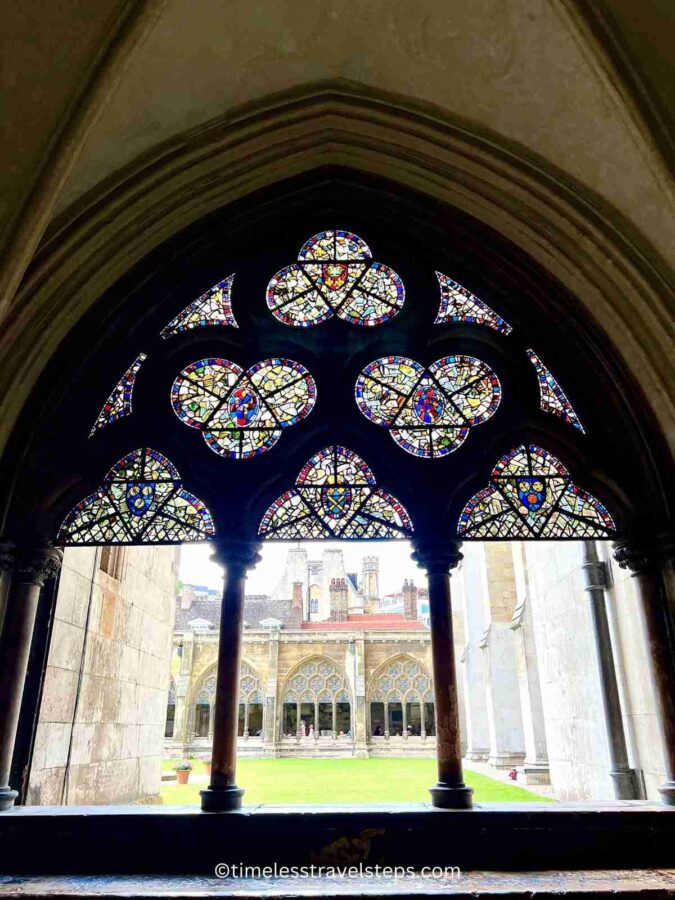
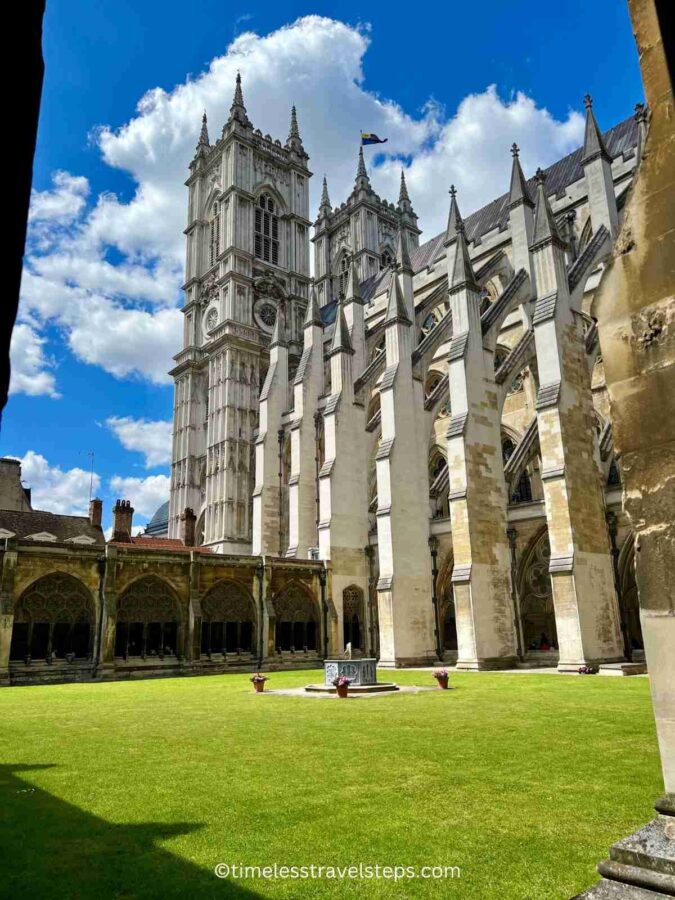
Practical Information: How to Visit the Chapter House Westminster Abbey
Access and Tickets: The Chapter House, Pyx Chamber, and cloisters at Westminster Abbey can be visited separately from the main abbey, with entry managed by English Heritage. Non-members need to pay a separate fee. Alternatively, these areas can be included in a Westminster Abbey ticket.
Opening Hours: Monday to Friday: 10:00 AM to 4:30 PM Saturday: 10:00 AM to 2:30 PM Sunday: Closed.
Security: Expect standard security checks at all entrances, including bag searches.
Facilities: The cloisters offer plenty of benches for rest, even during peak times, and a café is available for refreshments. Accessible restrooms and other visitor facilities are on-site.
Accessibility: Westminster Abbey aims to be accessible to all visitors. The main entrance, cloisters, and Chapter House are wheelchair accessible, with ramps and lifts provided. The Pyx Chamber may have limited accessibility due to its historic structure. Wheelchairs are available for loan, and assistance dogs are welcome. Visitor assistants, audio guides, and printed guides in large print are available to enhance the visitor experience.
Guided Tours: Guided tours provide deeper historical insights and enhance your visit.
Check the official Westminster Abbey website or contact their visitor services directly.
in sum…
The Chapter House Westminster Abbey along with Pyx Chamber, together, form a duo of historical treasures, each contributing to the rich narrative of Westminster Abbey. These precious medieval spaces of history have been lovingly preserved and restored. As part of English Heritage, these protected sites ensure that their legacy continues to be appreciated by visitors from around the world.
Before you go, take a look at some of the following most read posts about London:
Free Things to do near Chancery Lane, London.
Off-Beat, Free, & Ticketed Things to do in Greenwich, London + Tips.
Famous Food in London: Best Classic British Dishes you Must Try.
The Serenity of St Dunstan-in-the-East, London.
For all articles about London, head to Charming City London.
Happy and Safe Travels Always, Wherever Travel Takes You, xx
For more travel insights and tips, consider following Georgina on Instagram and Facebook. Don’t miss out on her latest adventures and expert advice. Subscribe to stay updated and join a community of fellow travel enthusiasts eager to explore the world through Georgina’s eyes.




